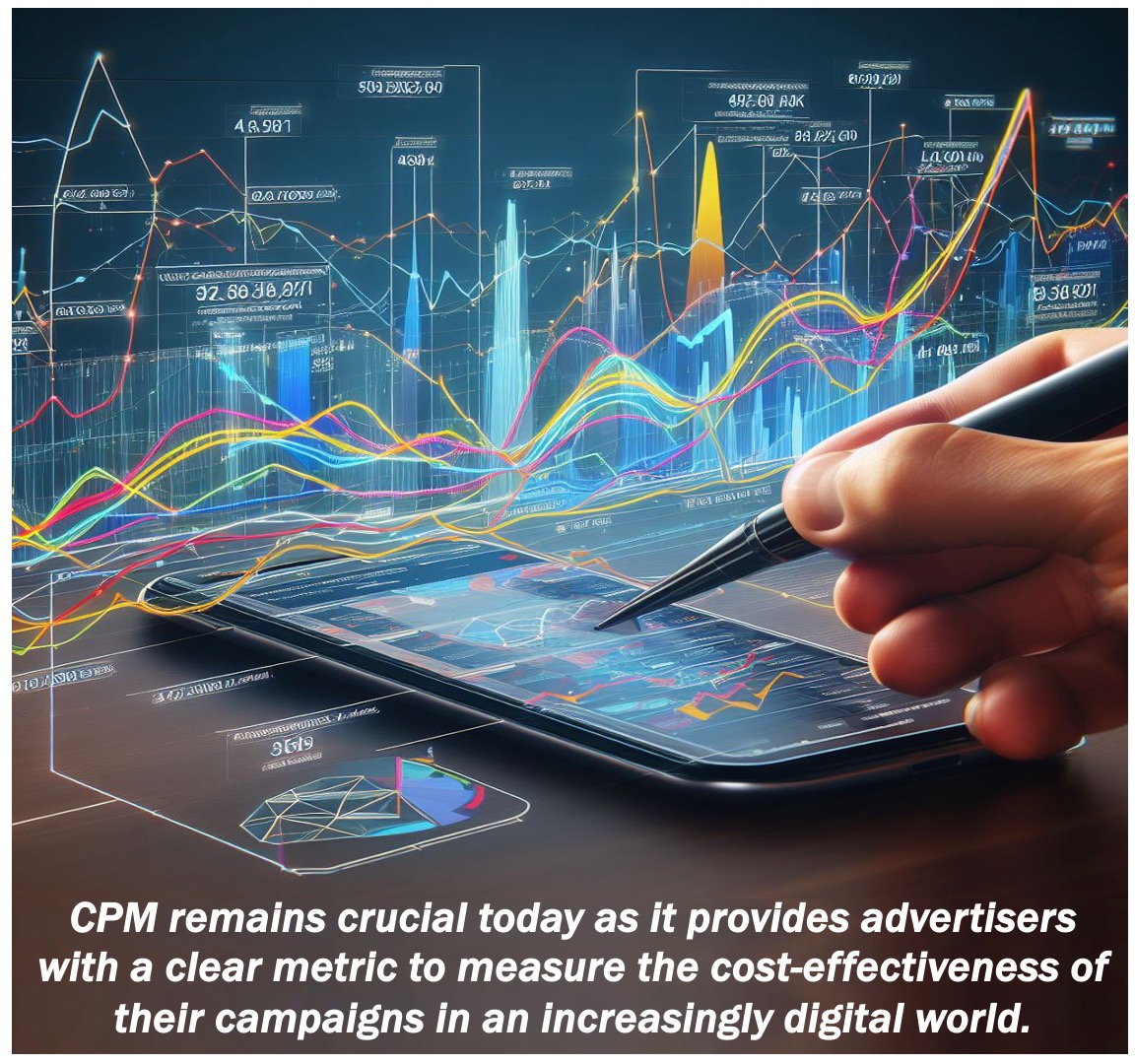In advertising and marketing, CPM (Cost Per Mille) serves as a crucial metric. It provides businesses and advertisers insight into the cost for every 1,000 ad impressions on a website. Essentially, Cost Per Mille represents the expense associated with reaching a thousand potential customers via a specific advertising medium.
Understanding CPM
CPM, or Cost Per Mille, might sound tricky at first. Let’s make it simple!
- Total Ad Cost
Think of this as the full bill for your entire ad campaign.
- Total Impressions
This is just a fancy way to say how many times your ad was shown.
Impressions vs. clicks
- Impressions
An ‘impression’ means the ad was shown on a screen. It doesn’t mean someone interacted with it, just that they had the chance to see it.
- Clicks
A ‘click’ means someone actually tapped or clicked on the ad, showing they were interested in it.
So, think of an impression as someone walking past a billboard and a click as someone stopping, seeing a button on the billboard, and pressing it.

Purpose and significance of CPM
- Budgeting
Cost Per Mille assists advertisers by allowing them to gauge how cost-effective different advertising platforms and channels are, thereby aiding in budget allocation.
- Comparative Analysis
By analyzing data across multiple platforms and campaigns, marketers can pinpoint which channels yield the highest return on investment.
- Strategy Optimization
Grasping CPM dynamics allows for the enhancement of advertising strategies, maximizing reach and minimizing costs.
Ways to use Cost Per Mille
CPM can be utilized in various ways, including:
- Digital advertising
It is immensely popular and effective in digital advertising, where the primary goal is to enhance visibility and boost brand awareness.
Digital advertising encompasses a range of online strategies and platforms, from search engine ads and social media promotions to video marketing and banner placements.
Each tactic offers unique opportunities for brands to connect with their target audience and ensure their message resonates in the vast digital landscape.
- Media buying
In order to evaluate the cost and potential reach of their advertisements, advertisers frequently use CPM as a standard metric when purchasing advertising slots, especially in digital media.
- Campaign Analysis
Post-campaign analysis can look at CPM to determine the true cost per thousand impressions, offering suggestions for future campaigns.
Advantages
Here are some of the many advantages CPM can offer you and your business:
- Scale
It helps advertisers to understand costs in a scalable manner, making it easier to compare different advertising options.
- Brand awareness
When a campaign’s objective is to increase brand awareness and optimize visibility, CPM is more important.
- Market presence
Consistent visibility through high impression counts helps imaintain a stable market presence.
Limitations
- Engagement
CPM does not take into account user engagement. An ad can have high impressions without being clicked on or interacted with.
- ROI (Return on investment)
A low CPM does not always mean that you’ll have high returns on investment, since it doesn’t factor in conversion or customer acquisition cost.
- Relevance
Without considering the relevance and quality of impressions, CPM may portray an incomplete picture of campaign efficacy.
CPM vs other metrics
- CPC (Cost per click)
CPC considers the cost for each click, emphasizing engagement over visibility.
- CPA (Cost per acquisition)
CPA evaluates the cost incurred to acquire a customer, incorporating conversion into the cost analysis. In simpler terms, it indicates how much we spend to make a sale.
CPM in YouTube
CPM on YouTube varies significantly based on the target audience, leading to fluctuations. For instance, niches such as finance typically command a higher CPM compared to others like gaming. This variation enables advertisers to precisely target specific demographics.
Written by Nicolas Perez Diaz, October 7, 2023.
